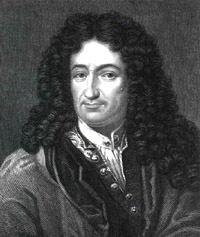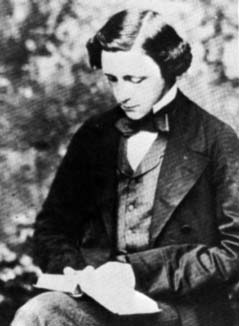- About MAA
- Membership
- MAA Publications
- Periodicals
- Blogs
- MAA Book Series
- MAA Press (an imprint of the AMS)
- MAA Notes
- MAA Reviews
- Mathematical Communication
- Information for Libraries
- Author Resources
- Advertise with MAA
- Meetings
- Competitions
- Programs
- Communities
- MAA Sections
- SIGMAA
- MAA Connect
- Students
- MAA Awards
- Awards Booklets
- Writing Awards
- Teaching Awards
- Service Awards
- Research Awards
- Lecture Awards
- Putnam Competition Individual and Team Winners
- D. E. Shaw Group AMC 8 Awards & Certificates
- Maryam Mirzakhani AMC 10 A Awards & Certificates
- Two Sigma AMC 10 B Awards & Certificates
- Jane Street AMC 12 A Awards & Certificates
- Akamai AMC 12 B Awards & Certificates
- High School Teachers
- News
You are here
Computing the Determinant Through the Looking Glass
Introduction
The method that we use today for solving systems of linear equations developed slowly throughout the 17th, 18th and 19th centuries. The first discussion of the connection between the value of the determinant and the solution of a system of linear equations was in a letter that Gottfried Wilhelm von Leibniz (1646-1716) sent to Guillaume François Antoine Marquis de L'Hôpital (1661-1704) in 1683. In that letter Leibniz used a computation that resembles a determinant as a basis for his claim that a particular system of linear equations had a solution.
In his 1815 paper, “Mémoire sur les fonctions qui ne peuvent obtenir que deux valeurs égales et de signes contraires par suite des transpositions opérées entre les variables qu'elles renferment” (“Essay on Functions That Have Only Equal and Opposite Values as a Result of Transpositions between their Variables”), the French mathematician Augustin Louis Cauchy (1789–1857) gave a definition of what we now call determinants [3]. A version of Cauchy's computational method is what is commonly taught in modern linear algebra textbooks.
 |
 |
 |
Left to right: Gottfried Wilhelm von Leibniz, Guillaume François Antoine Marquis de L'Hôpital, and Augustin Louis Cauchy (Sources: Convergence Portrait Gallery, MacTutor History of Mathematics Archive, MacTutor Archive, respectively)
 |
For matrices larger than 4 x 4 Cauchy's method is cumbersome and time consuming. However, the Victorian mathematician Charles Dodgson (1832–1898), who assisted many Oxford University students in preparing for their leaving (graduation) exams, developed an efficient and simple way to compute determinants. He described his method in a short paper titled “Condensation of Determinants, Being a New and Brief Method for Computing their Arithmetical Values,” which was published in the 1866-67 edition of the Proceedings of the Royal Society [1].
Tracing through the work of Leibniz, L'Hôpital and Cauchy, it is possible to see the development of the computational techniques for the determinant. Applying Dodgson's condensation method to the same determinant problems reveals the efficiency of his methods. In the era before the computer, Dodgson's insight was a valuable one. In reading Dodgson's own mathematical words, it is possible to see traces of the humor that is associated with Lewis Carroll.
The project Computing Determinants Through the Looking Glass is ready for students, and the Latex source is also available for instructors who may wish to modify the project for students. The comprehensive "Notes to the Instructor" presented next are also appended to the project itself.
This primary source project module for students is part of a larger collection published in Convergence, and an entire introductory discrete mathematics course can be taught from various combinations selected from these projects. For more projects, see Primary Historical Sources in the Classroom: Discrete Mathematics and Computer Science.
Notes to the Instructor
This project in the computation of determinants was designed to be incorporated into the middle of a sophomore level linear algebra course. The project assumes that students have learned a limited amount about linear systems and their connection to augmented matrices. It also assumes that they have used basic row reduction to solve systems of equations. In addition, students should have seen simple matrix computations and have experimented with computing matrix inverses. By the time that students encounter the material in this project they should know that the system of equations
\(ax_{1} + bx_{2}=u_{1}\)
\(cx_{1}+dx_{2}=u_{2}\)
can be written as the matrix equation
|
\begin{bmatrix}a & b\\c & d\end{bmatrix} |
\begin{bmatrix}{x_{1}\\x_{2}}\end{bmatrix} |
= |
\begin{bmatrix}{u_{1}\\u_{2}}\end{bmatrix} |
which we denote as \(A\mathbf{x}=\mathbf{u},\) that \(A\mathbf{x}=\mathbf{u}\) has a solution if and only if the matrix \(A\) is invertible, and in this case the solution is \(\mathbf{x}={A}^{-1}\mathbf{u}\). They should also have enough experience to know that computing an inverse can be time consuming and that it would be useful to have an easy test of whether or not a matrix is invertible.
 |
This project is meant to be used as an alternative to traditional textbook approaches to teaching students how to compute the determinant. In the course of completing this project, the students will read Cauchy's explanation of how to compute the determinant (the standard method) as well as learning Dodgson's efficient method of condensation. Most students appreciate the efficiency of Dodgson's rarely taught method and they enjoy the connection with Lewis Carroll.
Lower division students often need to be taught to slow down and read carefully when encountering mathematical texts. One of the goals of this project is to have students wrestle with somewhat unfamiliar language and symbols so that they begin to develop good mathematical habits. These habits include reading the text slowly, reading the text more than once, making marginal notes as they begin to understand the text, looking for gaps, and filling in missing steps. Many of the exercises encourage that type of reading and explicitly ask students to fill in steps.
This project typically takes one week of class time. It can be given out as an individual assignment but is well suited to being used as a small group project. Students appear to be more successful in extracting meaning from unfamiliar mathematical language when working with a partner. It is particularly effective if the class time for the week in which the project is assigned is devoted to group work on the project so that the professor can provide assistance as needed and the class can collectively discuss some of the more challenging parts of the project such as trying to extend Cauchy's method to the 4 x 4 case (Exercise 2.3). There is generally a vigorous class conversation about the details of the computations in Exercise 3.4 and 3.8 (large condensations).
Certainly one question that arises in working on this project is "Why does Dodgson's method yield the same determinant as the familiar method?" The project does not attempt to answer that question on a theoretical level, but Exercise 3.6 asks students to compute the 3 x 3 determinant for a matrix of variables using both methods and then compare the algebraic output. The article “‘Shuttling up like a telescope’: Lewis Carroll's ‘Curious’ Condensation Method for Evaluating Determinants” [2] does include a proof and is a good supplemental reading for this project.
Download the project Computing Determinants Through the Looking Glass as a pdf file ready for classroom use.
Download the modifiable Latex source file for the project.
For additional projects, see Primary Historical Sources in the Classroom: Discrete Mathematics and Computer Science.
Bibliography
[1] Dodgson, Charles, 1867, “Condensation of Determinants, Being a New and Brief Method for Computing their Arithmetical Values,” Proceedings of the Royal Society of London, Vol. 15 (1866-1867), Royal Society, London.
[2] Rice, Adrian and Eve Torrence, 2007, “‘Shuttling up like a telescope’: Lewis Carroll’s ‘Curious’ Condensation Method for Evaluating Determinants,” College Mathematics Journal, Vol. 38, No. 2, March 2007, Mathematical Association of America, Providence, RI.
[3] Stedall, Jacqueline, 2008, Mathematics Emerging: A Sourcebook 1540-1900, Oxford University Press, New York, NY.
Acknowledgment
The development of curricular materials for discrete mathematics has been partially supported by the National Science Foundation's Course, Curriculum and Laboratory Improvement Program under grants DUE-0717752 and DUE-0715392 for which the authors are most appreciative. Any opinions, findings, and conclusions or recommendations expressed in this material are those of the authors and do not necessarily reflect the views of the National Science Foundation.
Maria Zack (Point Loma Nazarene University), "Computing the Determinant Through the Looking Glass," Convergence (July 2013), DOI:10.4169/loci003992




